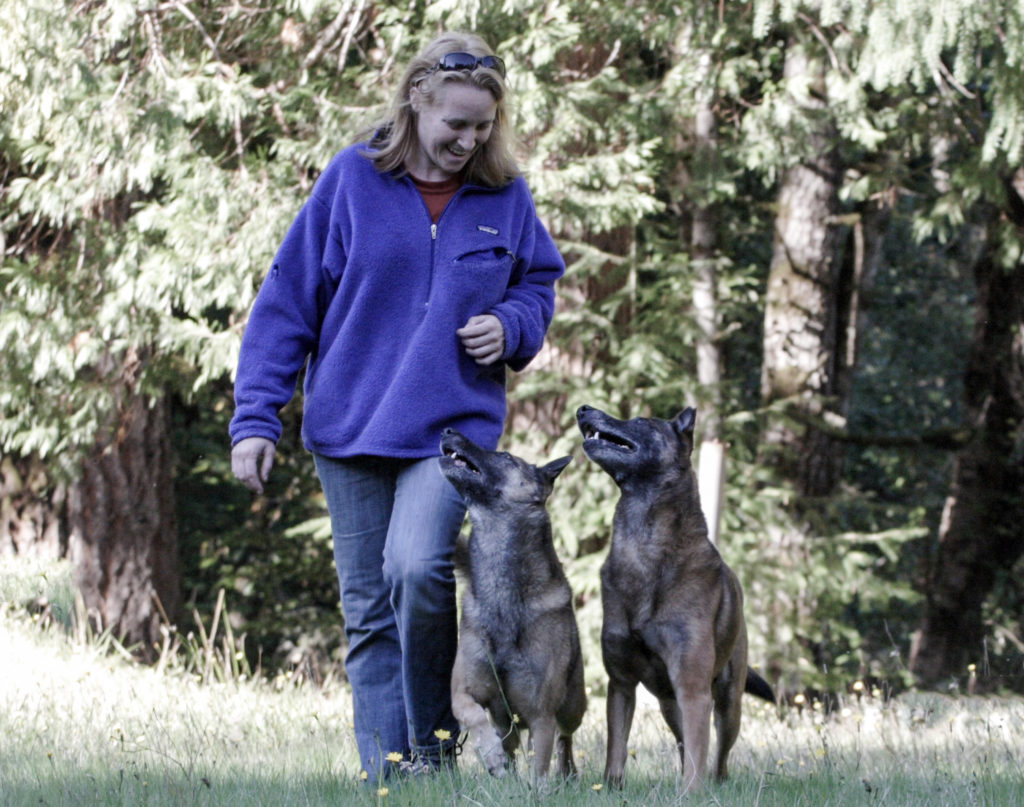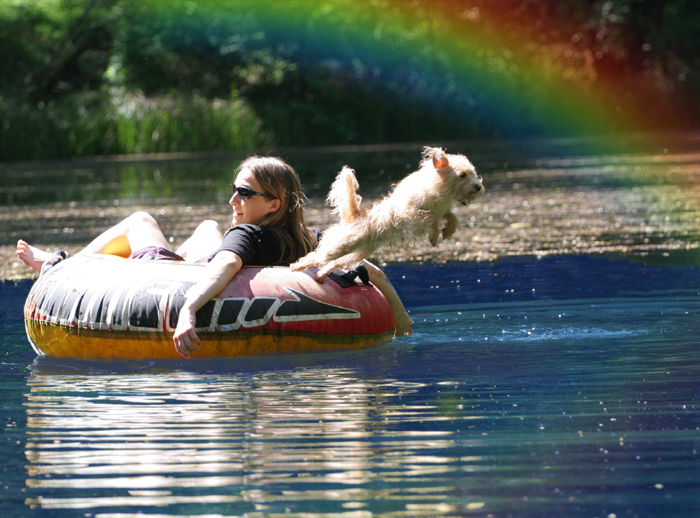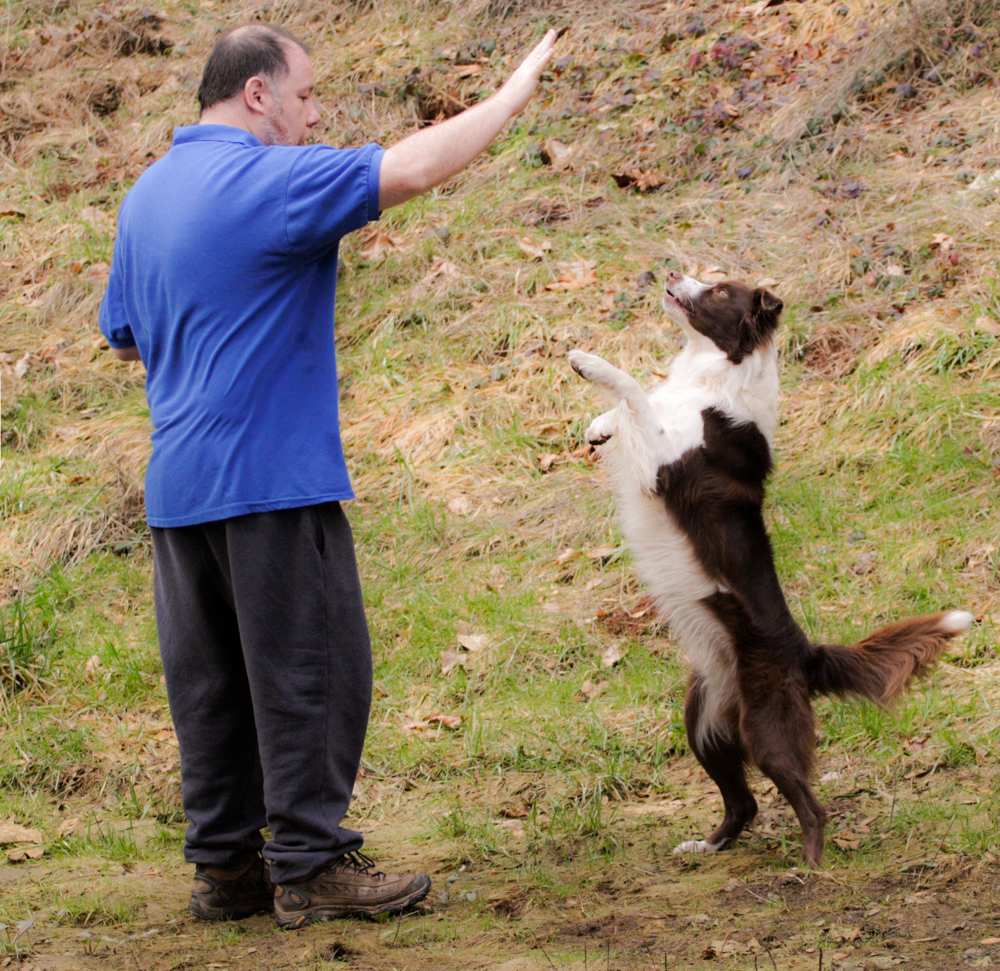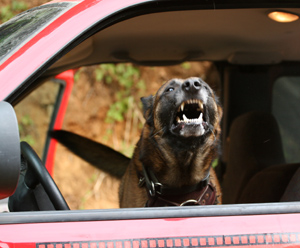Most dogs are under-conditioned and overweight. This is a huge problem in dogs as it is in people. It puts undue stress on their joints. It taxes their cardiovascular system. It reduces the quality and duration of their lives. This is ridiculous. Feed them less-exercise them more!
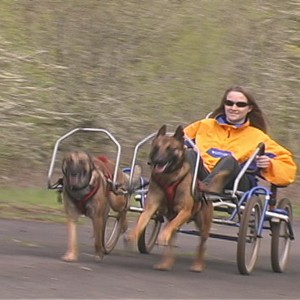
In my experience each dog requires a different program. Some are ectomorphic and we focus on adding muscle, others are endomorphic and we prioritize fat burning. Some can run all day but are weak in speed so we focus on developing speed and acceleration. With each dog we try to strengthen their weaknesses and improve overall balance, while at the same time developing natural strengths. A theoretical conundrum, but in practice we tend to have a strong gut feeling for what each individual needs. If you are keenly observant and strive for maximal overall fitness, I think most of the details are subsumed by the body’s natural ability to accommodate and achieve optimal health.
Much of what we “know” from human exercise is not directly applicable—canine metabolism and energy utilization are significantly different from human, but many of the notions can be adapted.
Here are a few of the principles we tend to utilize:
1. Safety–Always warm your dogs up at the beginning of an exercise session, and warm-down at the end. Make increases gradual, be patient, and give the body time to adapt. Use common sense and avoid injury! Remember that energy pathways, and muscles, develop far more quickly than bones and connective tissues, so you need to progress, particularly at first, at a rate that does not outstrip the slowest developing parts. Dogs have evolved to have all four feet on the ground. This means leaping in the air can be very hard on them. Their stifles and cruciate ligaments can easily tear. If you play frisbee or throw balls, try to avoid leaping. Also, give careful thought to the age at which you begin any serious exercise with your dog. Young dogs need a wide variety of exercises to maximize neural and musculoskeletal development, but it is important to avoid excessive exercise, strenuous exercise, or too much twisting or jumping until their growth plates are closed and their systems are adequately developed to handle these stresses. If you are not sure, talk to a knowledgeable veterinary physical therapist who can evaluate your individual animal. In adult dogs, it is also important to strive for balance and not overdo any particular exercise, particularly exercises like jumping or weaving. This is a fine line–you want to do enough of an activity that the body adapts, strengthens, and grows, but not so much that the body is constantly stressed and breaks down over time. This is particularly true in sports like agility where people tend to believe that the dog is getting adequate exercise from doing the activity, but in truth the activity does very little to exercise the dog and is almost entirely physically harmful–you need to exercise your dog so they can safely do agility, not imagine that agility is exercising your dog…
2. Diversity—arguably the greatest path to overall fitness is a wide variety of exercise type and intensity. The vast majority of any dog’s exercise program consists of some form of running, so vary the speed, duration, and type of running as much as possible. Vary the substrate, use weights, have them pull, etc. Incorporate non-running as much as possible—swimming, tug of war, bitework, dock diving, wrestling with you or another dog, etc. Be creative.
3. Periodization—whatever exercise regime you utilize, your dog’s body will soon become accustomed, and progress will slow. By altering the primary mode and intensity, you can prevent this plateau. At least every six weeks make a significant change to the routine. This will also reduce boredom…
4. Fartlek—the body tends to respond very well to brief periods of varied intensity. In the middle of a CV workout include periods of near-maximal intensity. Then return to CV pace. This is also effective in decreasing fat—work the body at a steady load for around 20 minutes, then increase the workload and suddenly the body is required to metabolize lots of fat to meet the demand. Also, acceleration requires roughly triple the energy of sustaining top speed, so incorporate repeated acceleration.
5. Sport specific training—whatever sports you pursue, incorporate them in your program. If conformation, make sure that you spend time trotting. There is no better rehearsal for a particular activity than that activity. However, keep in mind the old adage, “We perform the way we train” and avoid sport specific training when your dog is tired or flat. Perform this aspect at the beginning of a workout so that your dog rehearses perfection and intensity.
6. Proprioception—every aspect of canine performance and injury resistance benefits from adequately exercising all the small supportive components of a dog’s body, and by simultaneously recruiting the neural processes to use these components. Do exercises that will engage balancing and supporting muscles. Run on awkward slopes, run over complex terrain, run in water of various depths, swim in current or waves, carry a backpack with an unbalanced load, leg weights, wobble board, log spin, etc. Stand on one bank of a creek, 30 feet uphill from the creek, throw a ball across the creek up the opposite side, and watch with awe how many different exercises your dog does on the way across–downhill sprint, jump over logs, run through shallow water over complex rocks, leap into deeper water, swim, pull out of water on other side, run uphill, turn around, repeat…
7. Shocking—similar to periodization, but on a smaller scale. Any time the body is asked to do something different, it tends to respond with adaptation, so if you can safely “shock” your dog’s body, growth will likely occur. Suddenly increase intensity or duration, pre-fatigue with a related activity, stop for a swim on your way home, etc. Of course, anything too shocking will result in injury, so exercise caution…
8. Resistance—the sine qua non of building muscle, but rather difficult to incorporate into a canine program. Sprinting up sand dunes, pulling weight, tugging a log, retrieving a heavy object, etc. The goal here is that muscle “failure” occurs fairly quickly and the muscles respond by growing. Be mindful of overworking. Lactic acid can cause soreness, and also real damage to muscle. In the most extreme cases, exertional rhabdomyolysis can be fatal. So increase workload gradually and observe carefully.
9. CV—3-4 times per week of thirty minutes of moderate intensity work. I use the same basic test as for humans—breathing hard enough that they could talk but not sing. For my dogs this is panting, but not too rapidly. Fetch is probably the most common CV training, either on land or in water. Leash walking is rarely brisk enough to accomplish this goal.
10. LSD—a huge portion of the exercise any dog gets is aerobic—their breathing is only slightly elevated and they are not in oxygen debt. However, it is very difficult for us to really stress a dog’s system at this workload. Most dogs can trot at around 6 mph for many, many hours. Anything you can do that is truly LSD for a dog will tend to be somewhat hard on joints, and generally requires a mountain bike, ATV, or horse in addition to a 30 mile dirt trail… The primary advantage of LSD is the creation of an aerobic “base”, and the fact that once excess food is depleted the canine body burns primarily fat at these low levels.
11. Observation—this is the cornerstone of any canine exercise program. They cannot tell us if they are sore, or if they are hardly winded, or if they are having an off day. It is up to us to watch every workout and gather all the data we need to plan the next session. We need to observe everything their bodies are telling us, and occasionally check pulse, pulse recovery, pulse oximetry, etc. Between exercising, we need to observe hydration, urine output and color, soreness, etc.
12. Over-exercising—I would avoid too many miles on hard surfaces, I would avoid too many hours of the same motion, I would avoid boredom, limit jumping, etc. Pay particular attention to this issue if you participate in a sport like agility, disc-dog, or flyball where the activity itself is hard on your dog’s body.
13. Nutrition—obviously optimal fitness cannot be achieved without optimal nutrition. Consider what you are feeding, and when you are feeding relative to muscle exercise.
14. Rest—many of the benefits of exercise occur in the period between exercise when the body is recovering. Any fitness program must include adequate rest. The ratio of rest to work depends on many variables, including overall fitness level and intensity of work. For most of my dogs, three to five days of high intensity exercise out of seven seems optimal, with the other days being “active rest” days with low intensity exercise. Then I usually give them a week off from all high intensity work every six weeks. I tend to vary the frequency of exercise to avoid mental or physical routine—sometimes they exercise 5 days in a row, other weeks they exercise every other day, etc. And usually one day out of every ten has no exercise. After periods of rest, avoid too large an increase in intensity when you resume training. Since your ‘fresh’ dog may tend to overwork.
Of course, all this should be fun! Have a blast exercising your dog, observe the results, and continually modify the program to achieve your goals…
